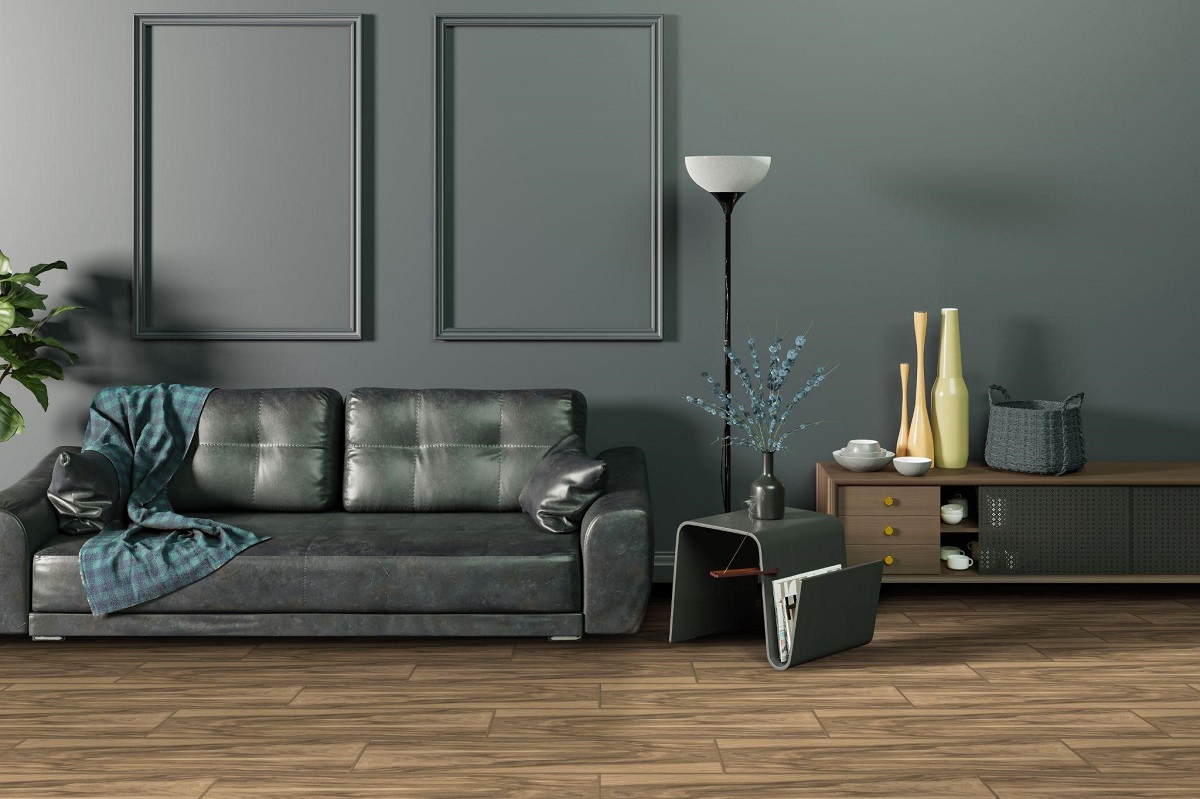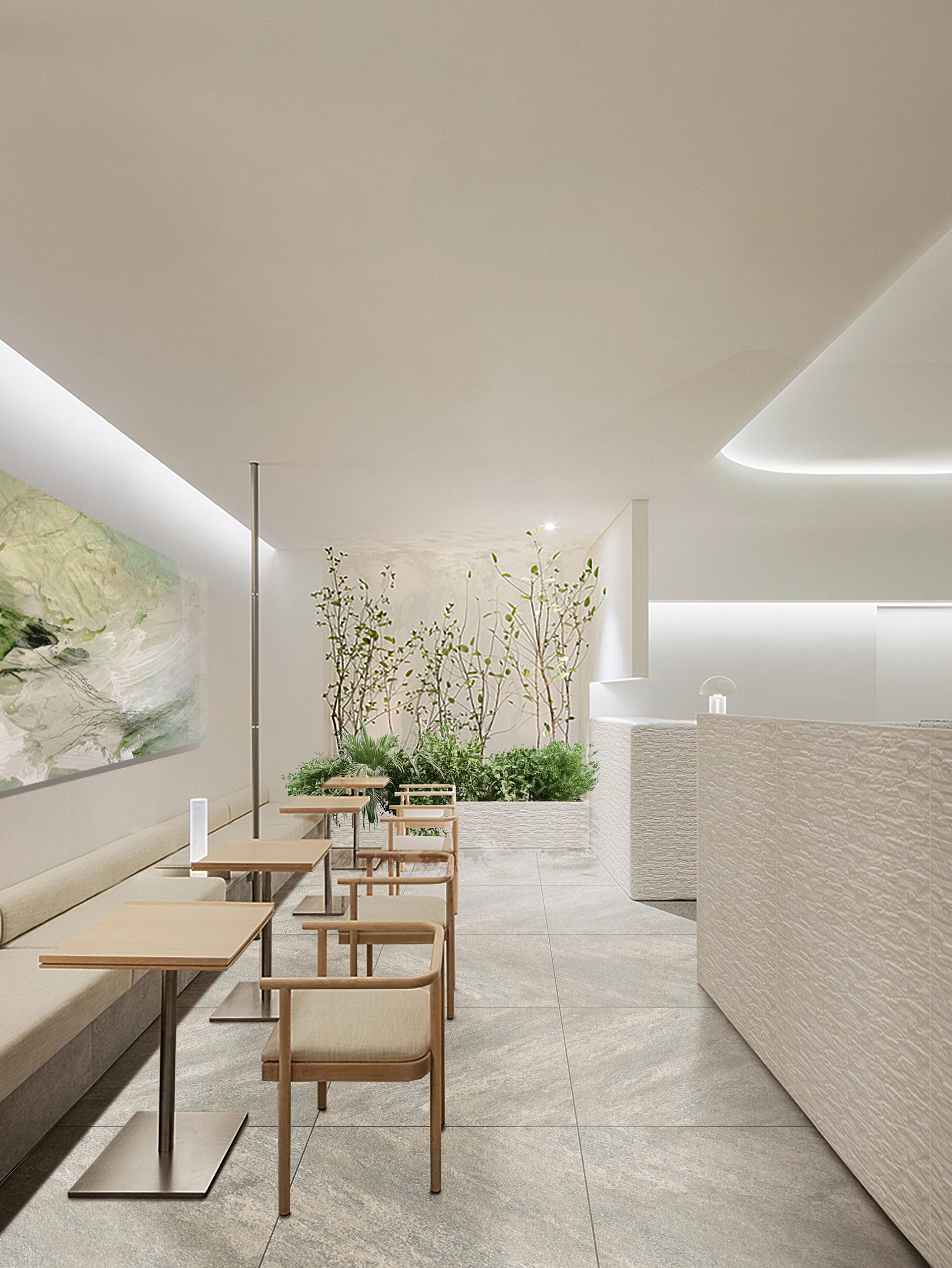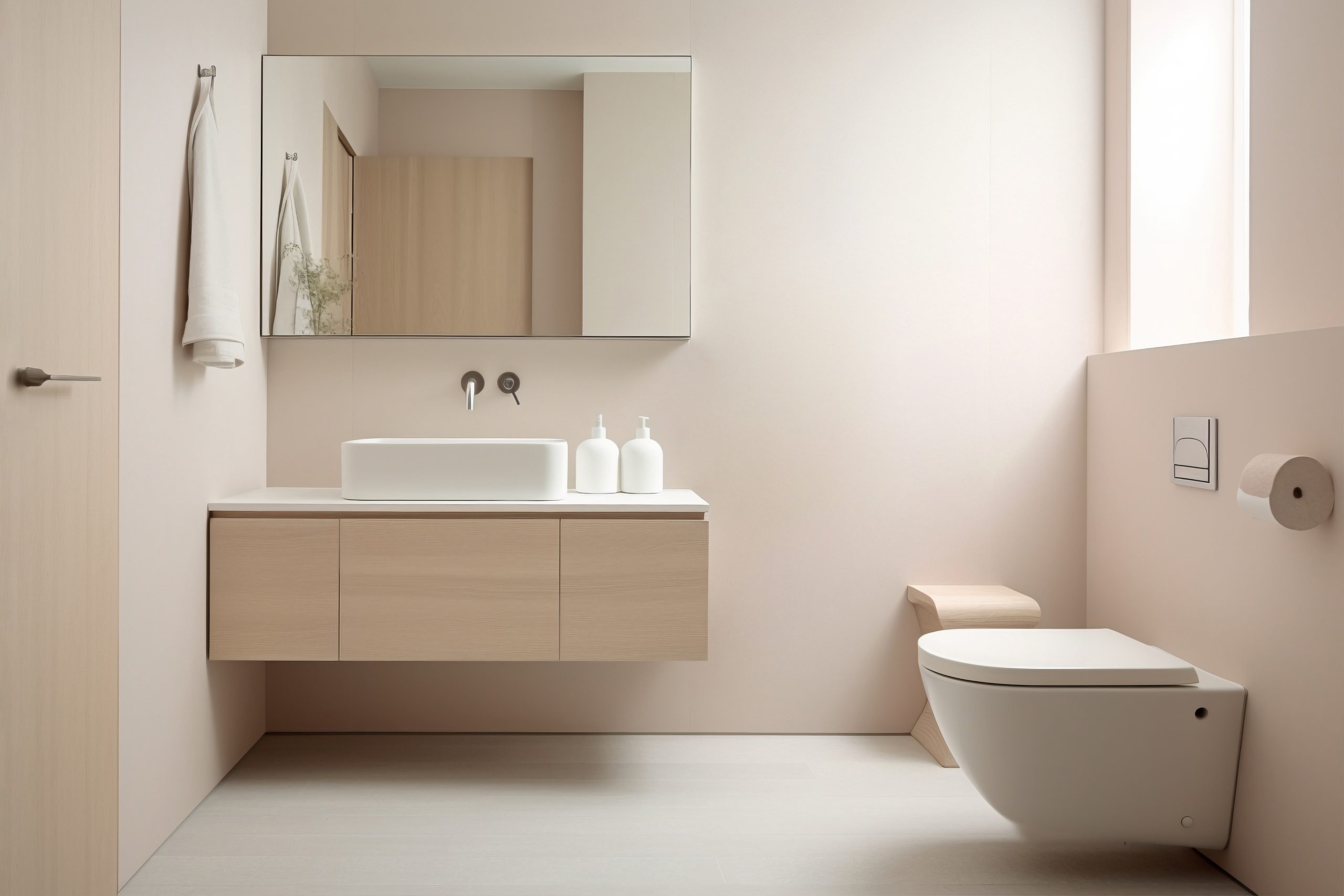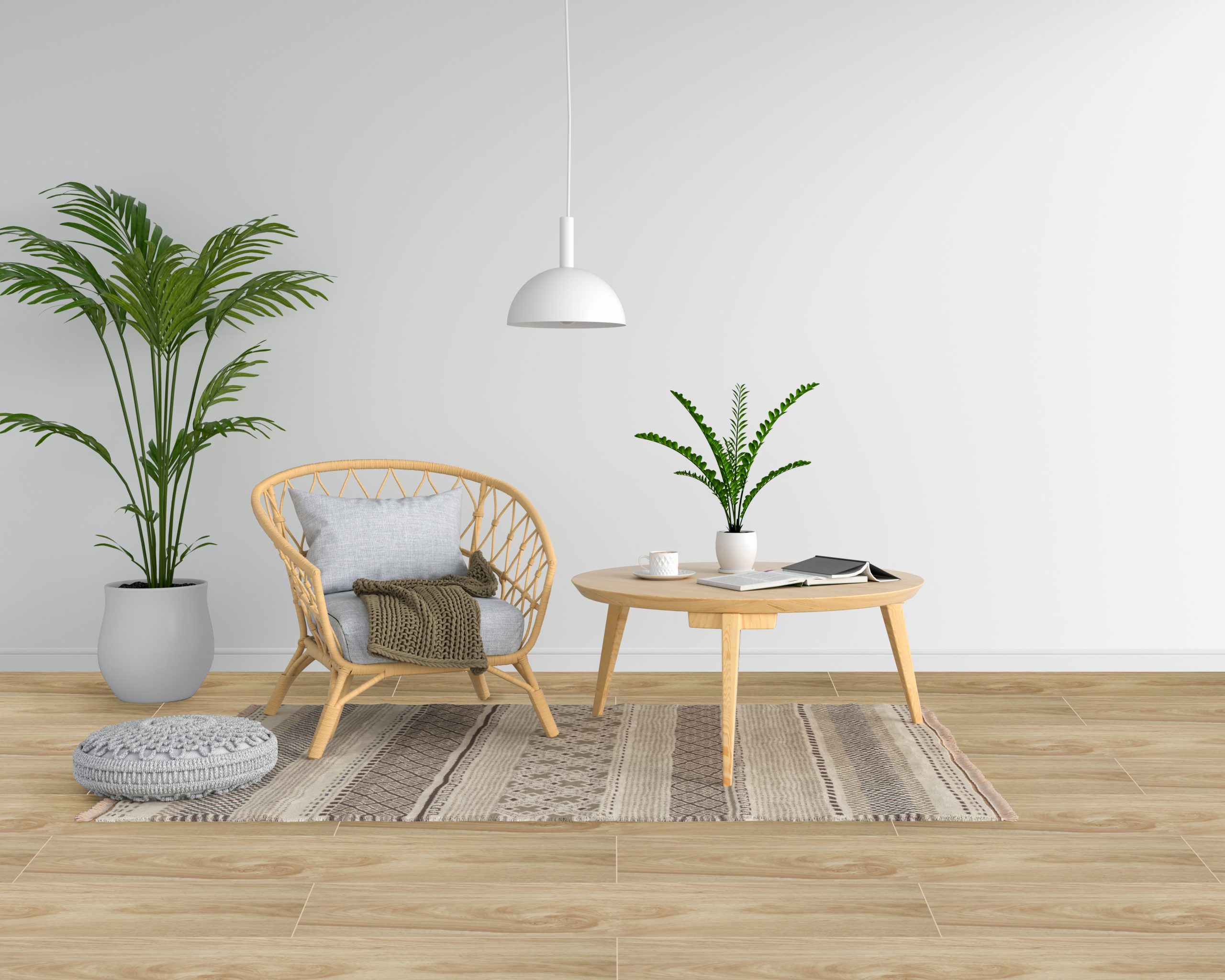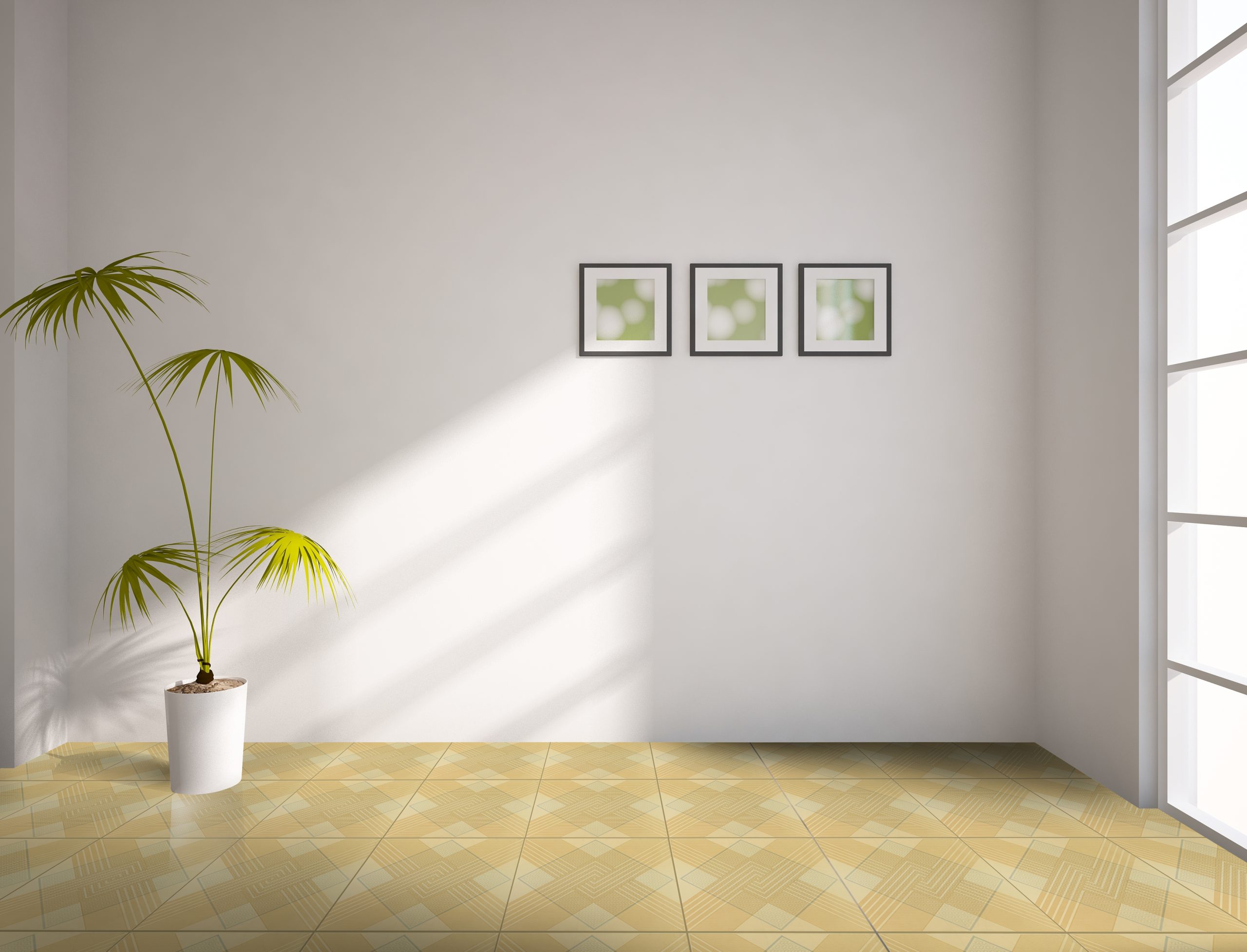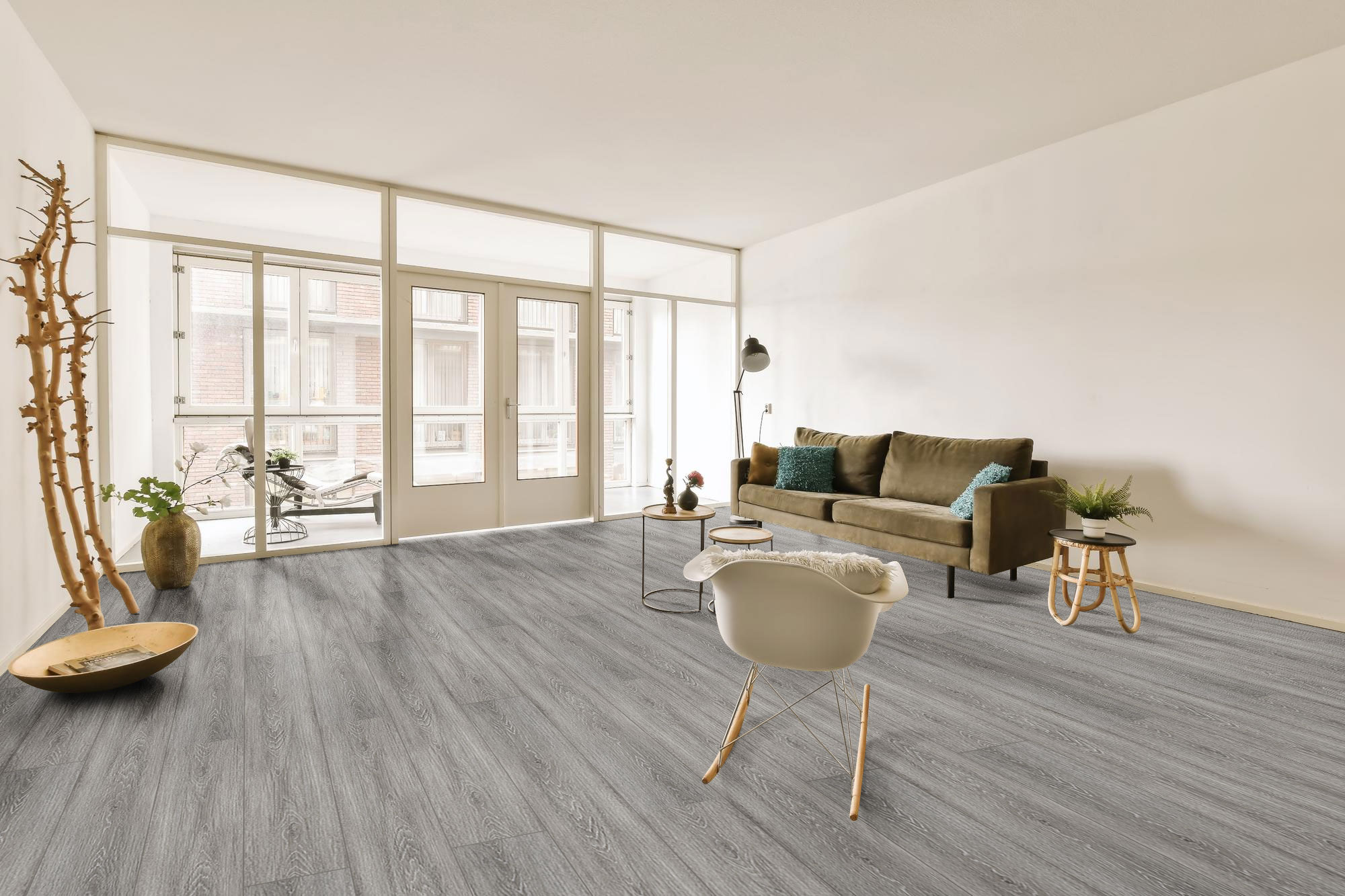What are design tips for using dark colors in my home?
- Bring in lots of light
- Feature your furniture
- Tie in eclectic elements
- Create contrast and balance
- Limit your patterns
- Use large materials
Nowadays, renovation materials like tile or paint come in more colors and styles than ever before, so why not experiment with darker colors? Though using these dark-colored, striking elements may be intimidating to some; they can add a lot of character to your home. When done right, these bold tones can elevate your chosen design style, but using dark colors requires some careful planning and creativity. To help you get started, here are some design tips for using dark colors in your interior design.
Bring in lots of light
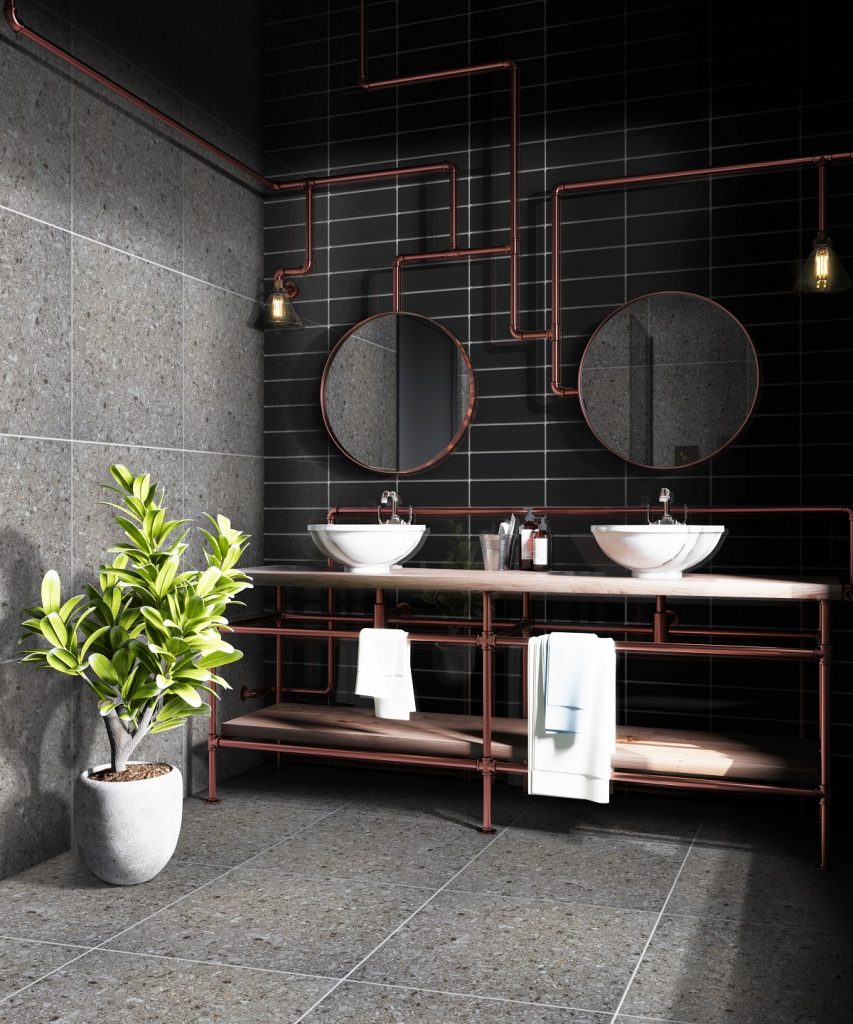
[10×30] 13UDH1 + [60X60] P127-7
When installing dark materials in your rooms, lighting should be one of the first things to consider. The darker the color is, the more it seems to absorb the brightness of the room. Without ample light, your room may end up feeling claustrophobic and dreary.
To avoid this, make sure that the room you’re designing has plenty of light sources. While using overhead and ambient lighting works well, natural light is preferred. Using dark tile in windowed rooms will allow enough sunlight to stream in, providing bright yet soft lighting. This feels more refreshing and does a better job of highlighting the dark surfaces of the room.
Feature your furniture
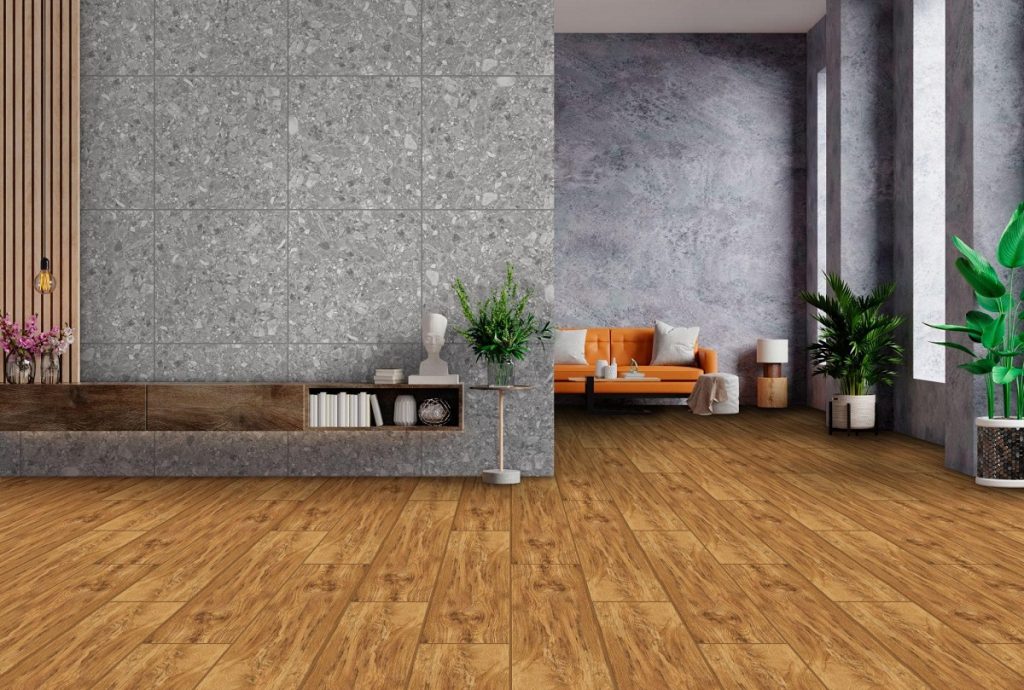
[60×60] M120-4 + [20×100] AI211
If you’re someone who wants to feature their furniture, using darker elements may be the best decision for you. With lighter-colored material, your furniture may be at risk of blending in, which makes your room seem drabber. Installing darker-colored tiles on your walls can play up the furniture, drawing the attention of the viewer.
Try using dark stone-like tile to add some contrast to your furniture. This will make the colors and designs of your furniture pop, and add more visual interest to the room. This scheme works well with brightly colored, intricate, and fun furniture pieces. Adding plants can also make the space feel more welcoming, and tie your design together.
Tie in eclectic elements
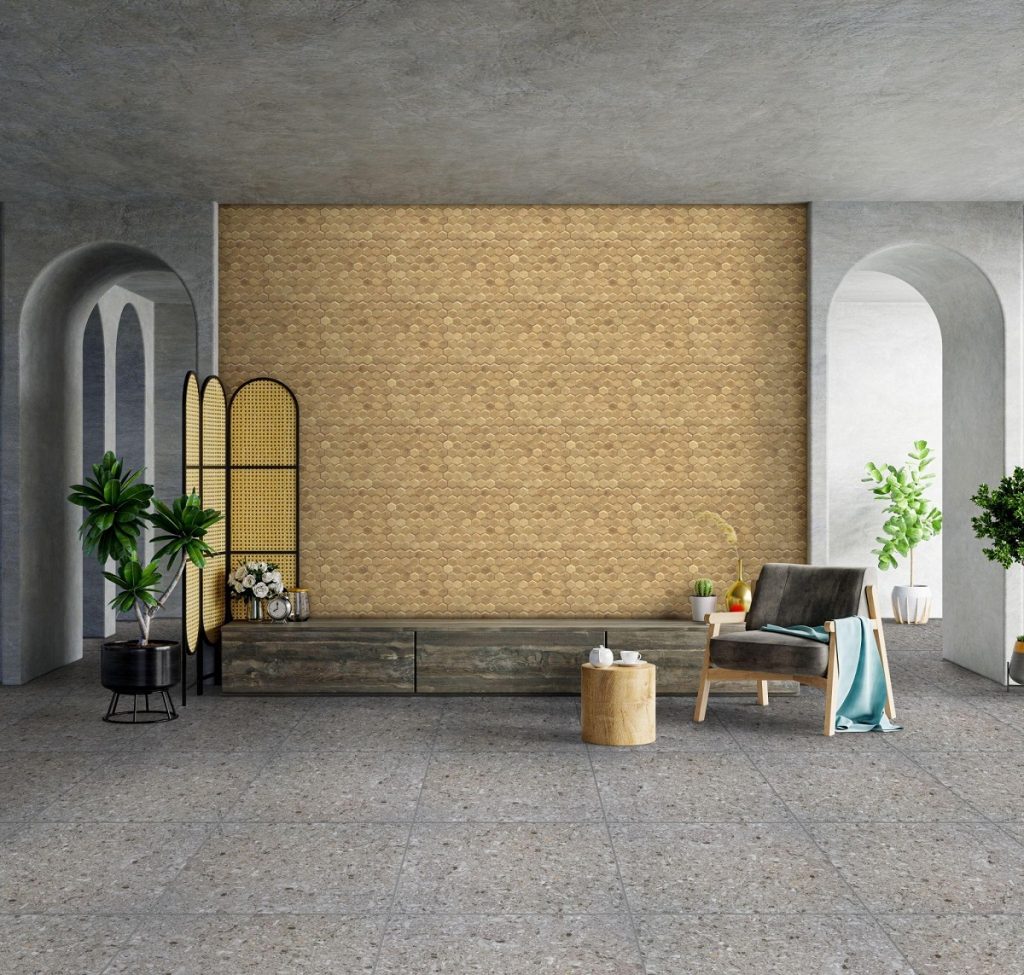
[29.2×58] NHC63014 + [60×60] P127-7
Similar to furniture, using eclectic elements can be a bit tricky with lighter colors. Dark tile is great for tying in pieces from different eras and styles because it gives a neutral background. This is perfect for those who want to mix and match their decor. When adding pieces with differing aesthetics, try to use various materials (such as wood, metal, and even fabrics). Pairing these with dark walls and stone-like flooring will unite the disparate elements and create a stimulating yet cohesive look.
Create contrast and balance
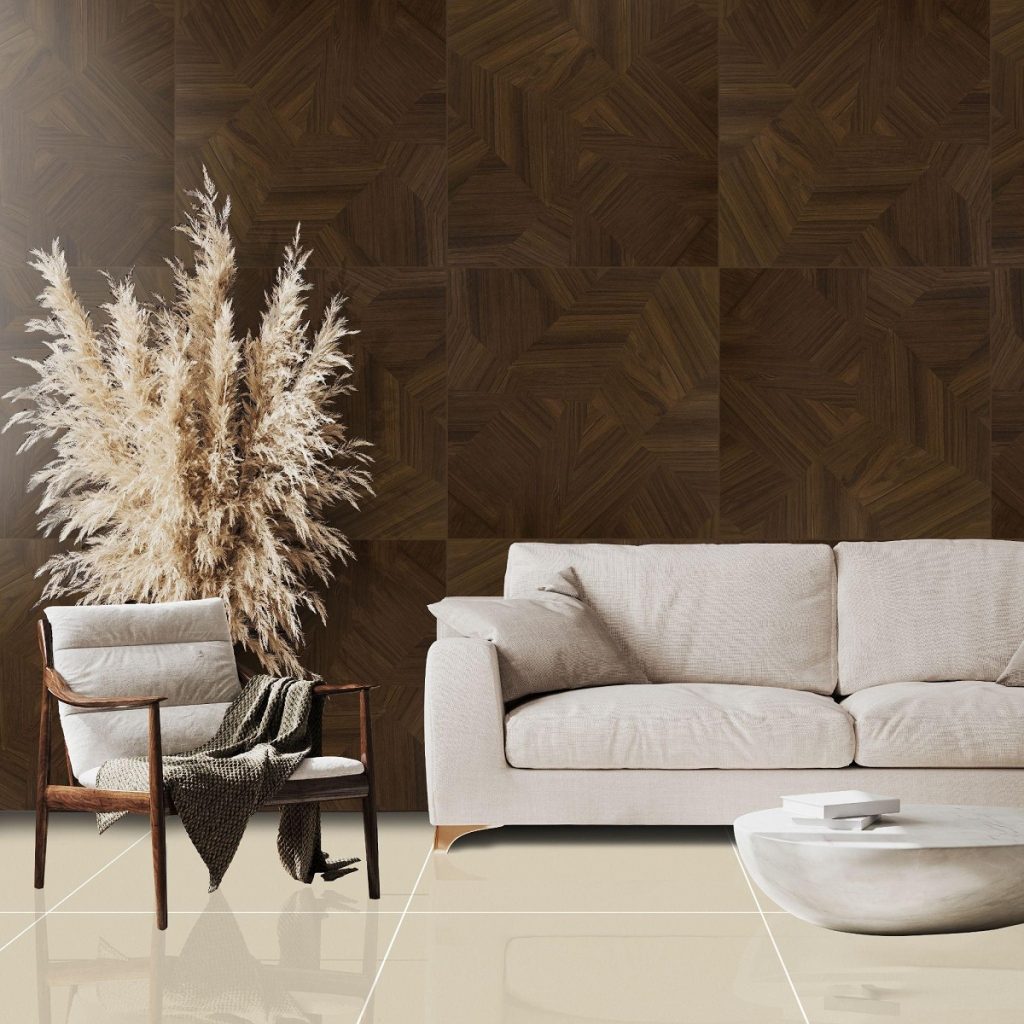
[60×60] V-00+ [60×60] CL11
When using dark colors, make sure something is balancing out its boldness. Too many dark-colored elements can make your room feel monotonous. In previous tips, we showed that you can achieve this using your furniture and decor. And, this can also be done by using a mix of building materials. Using dissimilar and textured tiles can create contrast and break up the monotony of your design. Make use of the various shapes, materials, and colors that you can add to your space — just make sure that there is a balance between the elements you’re using.
Limit your patterns
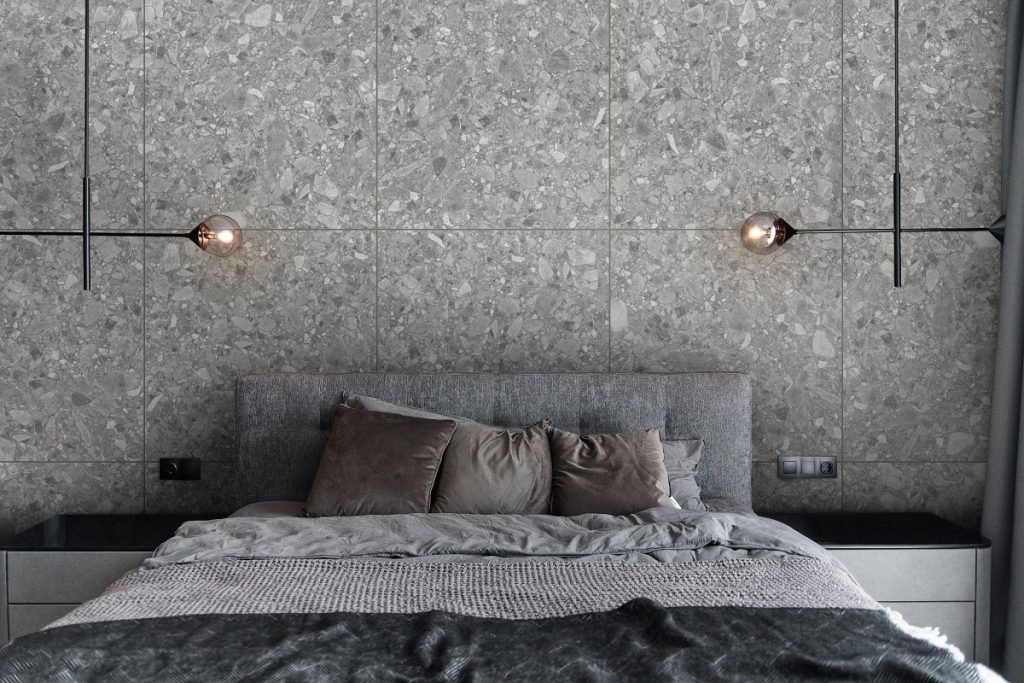
[60×60] M120-4
It’s great to have patterns in your room. Like using contrasting materials, some texture can add balance to the room while enhancing visual interest. Textures such as wood, stone, and metal, and fabrics such as velvet, linen, and cotton can add depth to the space. However, it’s best to limit the patterns in your dark-themed rooms. As darker colors are inherently eye-catching and dramatic, adding too many patterns can be overkill — making your rooms feel too cluttered. The number of patterns that best fit the space will vary from room to room, so trust your eye and your instincts.
Use large materials
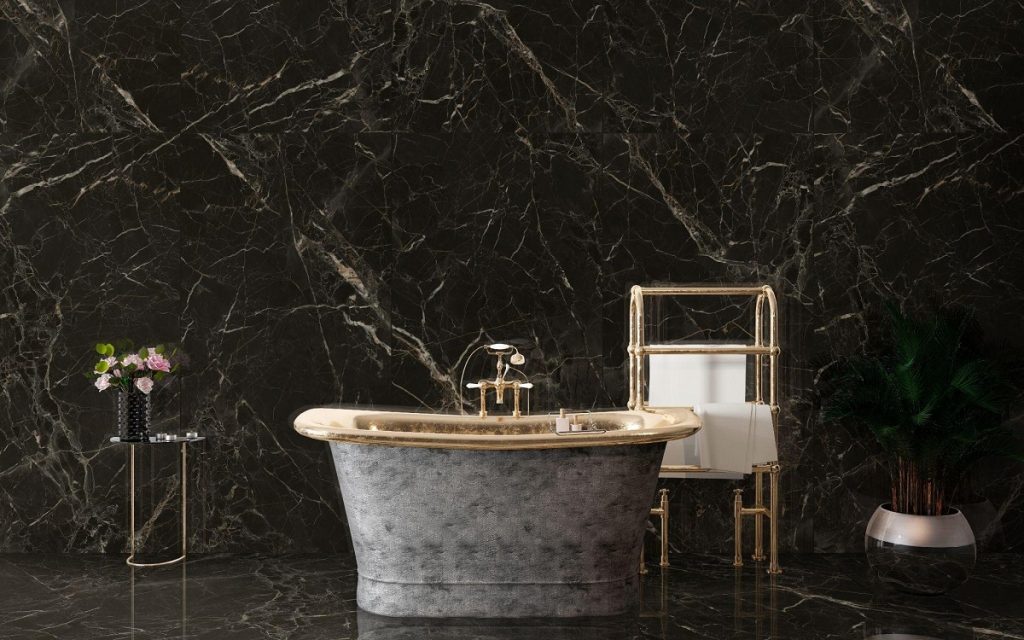
[90X180] L0D8FF-33E
In smaller rooms, using dark tones can be difficult. With the wrong application, you can make them feel even more cramped. The best way to work around that is to use larger pieces of material. Using large tiles can make the room feel more spacious. Installing these with dark grout can enhance this visual effect, due to its seamless look.
Using the same tile on your floor and walls can even blur the line further, creating the feeling of a bigger space. Worried that this will make your room too dim? Adding reflective elements and tiles with a marble look can easily add some brightness to this style.
Key Takeaway
Decorating with dark colors doesn’t have to be intimidating. There are many ways to use bolder colors to create a sleek yet vibrant environment for your home. These six design tips for using dark colors will help you add depth and character to your decorating scheme.
Planning your home renovation? Let Floor Center’s tiles help you build your dream designs. Check out our Styles & Ideas Guide for more tips and tricks. If you’re feeling inspired, Our FC Tile Viber Community Group is here for you to share your ideas, and keep up to date with tile design trends.
